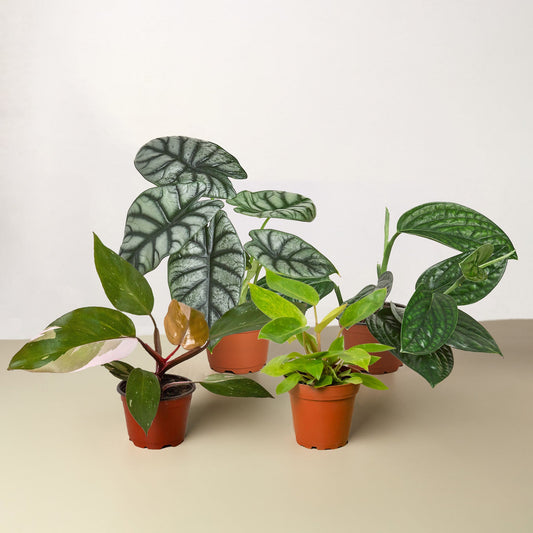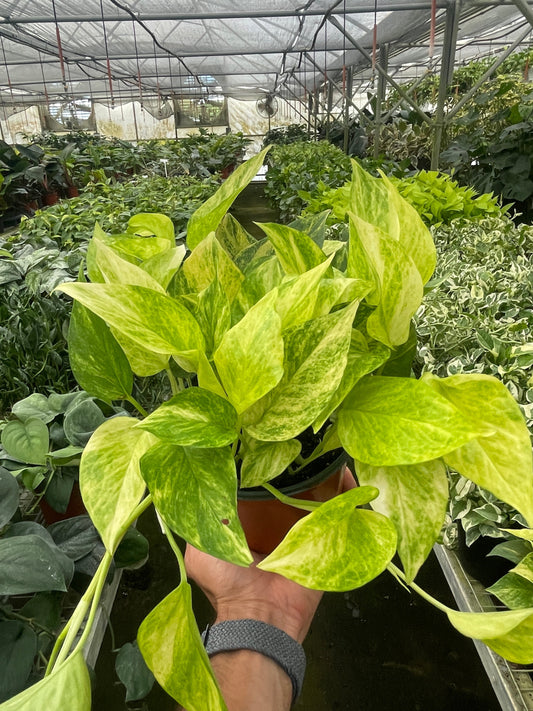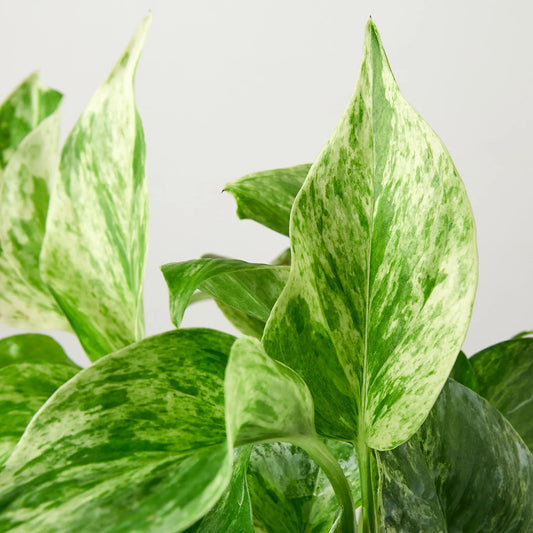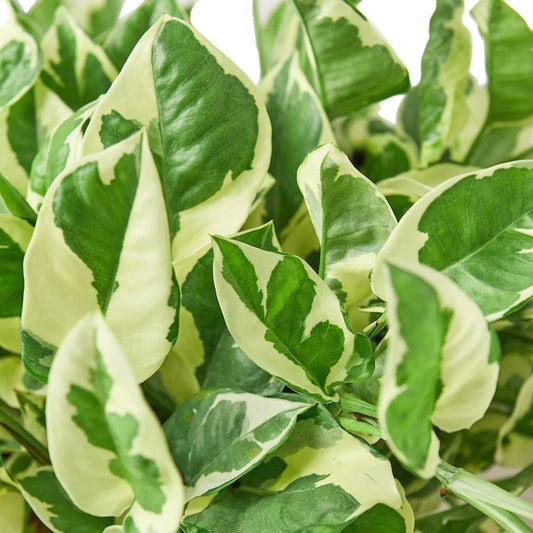How To Make Your Own DIY Queens Tears Fertilizer At Home
Cafe Planta Team
Houseplants are more than just pretty decoration—they’re living companions that bring us joy and a touch of nature indoors. Among these green friends, the Queen's Tears plant (Billbergia nutans) stands out for its unique blooms and easy-going nature. If you're a plant lover looking to give your Queen’s Tears the best care possible, crafting your own fertilizer at home can be both rewarding and budget-friendly.
This article will guide you through creating a DIY fertilizer specifically tailored for your Queen's Tears. We'll cover everything from understanding your plant's nutritional needs to mixing the perfect ingredients. By the end, you'll have a homemade solution that keeps your plant thriving and vibrant.
Understanding Queen's Tears Nutritional Needs
Before diving into the DIY process, it’s essential to know what makes Queen's Tears tick. These plants are epiphytes, meaning they naturally grow on other plants and rely on rainwater and debris for nutrients. This lifestyle gives us clues about what they need in terms of fertilizer.
Queen's Tears prefer a balanced diet of nitrogen, phosphorus, and potassium, along with trace elements like magnesium and calcium. These nutrients support their bright blooms and healthy foliage. When you’re crafting a fertilizer, keeping these needs in mind ensures you’re providing a balanced meal for your plant.
Interestingly, over-fertilizing can be as harmful as under-fertilizing. Too much can lead to burnt leaves or stunted growth, so it's crucial to get the mixture just right. Think of it like seasoning a dish—too little is bland, but too much can overpower the flavors. Striking the right balance will keep your Queen’s Tears happy and healthy.
Gathering Ingredients for Your DIY Fertilizer
Now that you have a grasp of what nutrients your Queen's Tears need, let's talk about the ingredients you’ll use. The beauty of a DIY fertilizer is that it often involves items you already have around the house. Here’s a list to get you started:
- Banana Peels: These are high in potassium, which is great for flowering plants like Queen’s Tears.
- Coffee Grounds: Rich in nitrogen, they can help promote lush, green foliage.
- Eggshells: Crushed eggshells add calcium to the mix, aiding in cell wall strength and growth.
- Epsom Salt: This provides magnesium, an essential element for photosynthesis.
- Compost: A small amount can add a variety of nutrients and beneficial microbes.
These ingredients are not only effective but also environmentally friendly, allowing you to recycle kitchen scraps into plant food. Plus, they’re budget-friendly, making it easy to maintain your plants without breaking the bank.
Preparing Your Ingredients
With your ingredients in hand, it’s time to prepare them for mixing. Each component requires a bit of prep work to unlock its nutrient potential. Here’s how to get them ready:
Banana Peels
Dry your banana peels by laying them out in the sun or placing them in a low oven. Once dry, grind them into a fine powder using a blender or food processor. This makes it easier for the plant to absorb the potassium.
Coffee Grounds
Collect used coffee grounds and let them dry out to prevent mold. You can spread them on a baking sheet and leave them in a warm, dry place for a few days. Once dry, they’re ready to use.
Eggshells
Rinse the eggshells to remove any residue, then bake them at a low temperature until dry. Crush them into a fine powder using a mortar and pestle or a blender. The finer the powder, the more readily the calcium will be available to your plant.
Epsom Salt and Compost
These ingredients are ready to go as is. Just make sure your compost is well-rotted and free of any large chunks or debris.
With everything prepped, you’re all set to mix your fertilizer. It’s like getting your ingredients ready for a recipe—each step ensures the final product is just right.
Mixing Your DIY Fertilizer
Mixing your DIY fertilizer is a straightforward process. Here’s a simple recipe to follow, which you can adjust based on your plant’s response:
- 1 part banana peel powder
- 1 part coffee grounds
- 1 part eggshell powder
- 1 teaspoon Epsom salt
- 1 tablespoon compost (optional for extra nutrients)
Combine all the ingredients in a container and mix thoroughly. Store your fertilizer in an airtight container to keep it fresh. When you’re ready to use it, sprinkle about a tablespoon around the base of your Queen’s Tears every month during the growing season. Less is more here, so start with a small amount and increase if needed.
This blend provides a balanced supply of nutrients, mirroring what Queen’s Tears would find in their natural environment. Like seasoning a dish to taste, you can tweak the ratios if you notice your plant responding better to certain nutrients.
Applying Fertilizer to Queen's Tears
Applying your homemade fertilizer is simple, but there are a few tips to ensure your plant gets the most benefit. Timing and technique are everything:
Timing
Fertilize during the growing season, which is typically spring and summer for most houseplants. This is when your Queen’s Tears are actively growing and can best utilize the nutrients. Hold off on fertilizing in the fall and winter when growth slows down.
Technique
Gently scratch the fertilizer into the top layer of soil with your fingers or a small tool. This helps incorporate the nutrients into the soil where roots can access them. Water your plant after applying fertilizer to help dissolve the nutrients and carry them down to the root zone.
Applying too much fertilizer can burn the plant, so always start with a conservative amount. If you notice yellowing leaves or other signs of distress, reduce the amount or frequency of fertilization.
Monitoring Plant Health
Once you’ve started using your DIY fertilizer, keep an eye on your plant’s health. Queen’s Tears are generally low-maintenance, but they’ll let you know if something’s off. Here are some signs to watch for:
- Healthy Growth: Look for vibrant, green foliage and regular blooming during the growing season.
- Yellowing Leaves: This can indicate over-fertilization or a nutrient imbalance. Adjust your fertilizer mix or frequency.
- Slow Growth: If your plant seems sluggish, it might need more nutrients. Consider increasing the amount of fertilizer slightly.
Think of this like checking in with a friend—you want to make sure everything’s going well and offer support if needed. Regular monitoring helps catch any issues early, keeping your plant in top shape.
Troubleshooting Common Fertilizing Issues
Even with the best intentions, things don’t always go as planned. If you encounter any issues, don’t worry—there are usually simple solutions:
Over-Fertilization
If you suspect you’ve over-fertilized, flush the soil with water to help remove excess nutrients. Reduce the frequency or amount of fertilizer you’re using until the plant recovers.
Nutrient Deficiencies
If your plant isn’t thriving despite regular fertilization, it may need a specific nutrient. Research the symptoms of common deficiencies and adjust your fertilizer mix accordingly. For example, yellowing leaves might indicate a lack of nitrogen, while poor blooming could be from insufficient potassium.
Environmental Factors
Sometimes, issues aren’t related to fertilization at all. Check that your Queen’s Tears is getting enough light and water, and that the humidity is appropriate for its needs. Addressing these factors can often resolve growth issues.
Troubleshooting is like detective work, requiring patience and observation. By paying attention to your plant and adjusting your care routine, you can usually find a solution.
Benefits of DIY Fertilizers
Crafting your own fertilizer has several perks beyond just saving money. Here’s why it’s a great option for plant people:
- Customizable: You can tailor the mix to suit your plant’s specific needs, adjusting as necessary for optimal growth.
- Eco-Friendly: Using kitchen scraps reduces waste and promotes a more sustainable lifestyle.
- Safe: Homemade fertilizers are free from harsh chemicals, making them safer for your plants and the environment.
- Educational: Creating your own fertilizer deepens your understanding of plant care and encourages a more hands-on approach.
It’s like cooking a homemade meal instead of ordering takeout—you have more control over the ingredients, and it’s often more satisfying. Plus, your plants will thank you for the thoughtful care.
Other Plant Care Tips for Queen's Tears
While fertilization is crucial, don’t forget about other aspects of plant care. Here are some additional tips to keep your Queen’s Tears thriving:
Light
These plants prefer bright, indirect light. Too much direct sunlight can scorch the leaves, while too little light can hinder blooming. A spot near an east or west-facing window is usually ideal.
Water
Water when the top inch of the soil feels dry. Ensure the pot has good drainage to prevent waterlogging, which can lead to root rot.
Humidity
Queen's Tears enjoy humidity, so consider misting the leaves or placing a humidifier nearby. This mimics the plant’s natural environment and promotes healthy growth.
Think of plant care as a holistic practice—the more you align with your plant’s natural preferences, the happier it will be.
Final Thoughts
Creating your own DIY Queen's Tears fertilizer is a rewarding process that not only saves money but also deepens your connection with your plant. By understanding its nutritional needs and crafting a balanced formula, you’re setting your plant up for a healthy and vibrant life.
Here at Cafe Planta, we love sharing our passion for plants with others. Whether you’re a seasoned plant parent or just starting out, we’re here to help. If you have questions about plant care or want to share your plant stories, feel free to email us or reach out on Instagram. Let’s grow together!



















